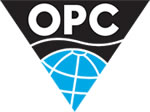Middle East / Africa
Country profile: Eritrea
| Location: | Eastern Africa, bordering the Red Sea, between Djibouti and Sudan |
| Climate: | hot, dry desert strip along Red Sea coast; cooler and wetter in the central highlands (up to 61 cm of rainfall annually, heaviest June to September); semiarid in western hills and lowlands |
| Terrain: | dominated by extension of Ethiopian north-south trending highlands, descending on the east to a coastal desert plain, on the northwest to hilly terrain and on the southwest to flat-to-rolling plains |
| Size: | 121320 sq. km total (Land area: 121320 sq. km ) |
| Population: | 5,028,475 (July 2008 est.) |
| Languages: | Afar, Arabic, Tigre and Kunama, Tigrinya, other Cushitic languages |
| Government: | transitional government |
| Capital city: | Asmara (Asmera) |
| Legal system: | primary basis is the Ethiopian legal code of 1957, with revisions; new civil, commercial, and penal codes have not yet been promulgated; government also issues unilateral proclamations setting laws and policies |
| Currency: | nakfa (ERN) |
| Licensing: |
Country profile
In 1952, a UN resolution federating the former Italian colony of Eritrea with Ethiopia went into effect. In 1962, Emperor Haile Selassie unilaterally dissolved the Eritrean parliament and annexed the country. The Eritrean fight for independence continued even after Haile Selassie was ousted in a coup in 1974. A 30-year struggle for independence ended in 1991, with Eritrean rebels defeating the governmental forces led by Mengistu Haile Miriam. On April 23-25, 1993, Eritreans voted overwhelmingly for independence from Ethiopia in a UN-monitored free and fair referendum.
The Eritrean authorities declared Eritrea an independent state on April 27, 1993. The National Assembly was elected in national, freely contested election and then chose former liberation movement leader Isaias Afwerki as President. When Eritrea and Ethiopia separated amicably in 1993, several border issues remained unresolved. Fighting broke out between the two countries in May 1998 and continued until June 2000 when both sides accepted an Organization of African Unity (OAU) peace proposal. The formal treaty ending the war was signed on December 12, 2000 and an independent entity, the Eritrea Ethiopia Boundary Commission (EEBC) was established to determine the new border.
The EEBC released its report on April 13, 2002, but Ethiopia is contesting some of the commission's decisions. Growth of the Eritrean economy was hampered by the war. Eritrea's real GDP growth in the two years prior to the conflict averaged 7.4 percent. Real GDP growth fell to 4.0 percent in 1998, 0.0 percent in 1999 and -13.1 percent in 2000. With the cessation of hostilities, real GDP growth of 9.2 percent was observed in 2001, and growth of 0.7 percent in 2002. Growth was 3.0 percent in 2003, 1.8 percent in 2004, and 0.6 percent in 2005. Growth of 1.0 percent is the forecast for 2006. Inflation is an ongoing problem; it was 15.1 percent in 2005. Multilateral and bilateral donors have pledged nearly $132 million towards the demobilization of 200,000 Eritrean soldiers and the social and economic recovery of the country. Donor development funding is seen as crucial in the improvement of the country's economy.
Oil Hydrocarbon exploration, primarily offshore in the Red Sea, began in the 1960's when Eritrea was still federated with Ethiopia. In 1995, Eritrea signed a production sharing contract (PSC) with U.S.-based Anadarko Petroleum (Anadarko) for the offshore Zula Block. Anadarko signed a second PSC for the offshore Edd Block, located south of the Zula Block, in September 1997. Anadarko announced, in December 1997, that it had reached an agreement with ENI/Agip (Agip) to swap interests in exploration acreage. Anadarko received a 25 percent interest in a Tunisian block operated by Agip, and Agip received a 30 percent share in the 6.7-million acre Zula Block and 30 percent interest in the Edd Block. Burlington Resources, a U.S.-based independent, later joined the consortium by acquiring a 20 percent interest in both acreages.
Anadarko's first two exploration wells, both drilled on the Zula Block, were unsuccessful. In January 1999, a third dry well, Edd-1 on the Edd Block, was drilled. Citing the disappointing exploration results, Anadarko and its partners ceased exploration activities and relinquished their rights to the offshore blocks. Another attempt also did not meet with success. In May 2001, U.S.-firm CMS Energy signed an exploration agreement for a 14,000-square kilometer block in northeastern Eritrea, but the company did not find oil. CMS Energy sold its exploration interests to Perenco S.A. of France in late 2002. Bab el-Mandeb (Mandab) The Bab el-Mandeb is a narrow waterway situated between Eritrea, Djibouti and Yemen that connects the Red Sea with the Gulf of Aden and the Arabian Sea.
In 2000, it was estimated that around 3.2-3.3 million barrels per day (bbl/d) of oil flowed through the Bab el-Mandeb. Disruptions or closure of the Bab el-Mandeb could keep tankers from the Persian Gulf from reaching the Suez Canal/Sumed Pipeline complex, diverting them around the southern tip of Africa (the Cape of Good Hope). This would add greatly to transit time and cost, and effectively tie up spare tanker capacity. The Bab el-Mandeb could be bypassed (for northbound oil traffic) by utilizing the East-West oil pipeline, which traverses Saudi Arabia and has a capacity of about 4.8 million bbl/d. However, southbound oil traffic would still be blocked. In addition, closure of the Bab el-Mandeb would effectively block non-oil shipping from using the Suez Canal, except for limited trade within the Red Sea region. In December 1995 and again in August 1996, Eritrean and Yemeni forces clashed over control of the Hanish Islands, located just north of the Bab el-Mandeb.
In October 1996, the two countries signed an agreement over the islands. The two sides agreed to put their case before an international court of arbitration (Permanent Court of Arbitration-PCA). The court then issued two rulings; one on who has sovereignty over the disputed area, and one on the demarcation of the two sides' maritime boundary. In October 1998, the PCA ruled that the Hanish Islands are subject to the territorial sovereignty of Yemen. In December of 1999, the PCA issued its ruling on the maritime boundary. Downstream and Refining Eritrea has crude refining capacity of 18,000 bbl/d, but the refinery located in the Red Sea port of Assab has been shut down since 1997 due to the high operating and maintenance costs. Ethiopia and Eritrea, joint operators of the facility, decided to close the Assab refinery in August 1997 and import refined petroleum products to meet domestic needs. Eritrea's petroleum consumption was estimated at 6,000 bbl/d in 2001. Marketing and distribution of petroleum products is performed by ExxonMobil, Shell and Total.
In June 2000, Shell purchased the downstream operations of Agip in several African countries including Eritrea and Ethiopia. The Eritrean assets included service stations, two petroleum product depots and an LPG (liquefied petroleum gas) filling station. In August 2000, Sudan's National Petroleum Company announced plans to lay pipelines to supply Eritrea and Ethiopia with petroleum products from its Khartoum refinery. Eritrea has not yet benefited from Sudanese oil and relations between the two countries soured in April 2003 when Sudan accused Eritrea of supporting Sudanese rebels in the eastern part of Sudan. Although Eritrea denies the charges, future trade relationships are unlikely under the current climate.
Energy production and consumption
| Oil | Gas | |
| Production: | ||
| Consumption: | 5,000 bbl/day (2005 est.) | |
| Exports: | 54 bbl/day (2005 est.) | |
| Imports: | 4,924 bbl/day (2005 est.) | |
| Reserves: | ||
| Major fields: |
Other countries in this region
- Algeria,
- Angola,
- Bahrain,
- Benin,
- Botswana,
- Burundi,
- Cameroon,
- Central Africa Republic,
- Chad,
- Comoros,
- Congo (Brazzaville),
- Congo (Democratic Rep.),
- Cote d'Ivoire,
- Djibouti,
- Egypt,
- Equatorial Guinea,
- Ethiopia,
- Gabon,
- Gambia,
- Ghana,
- Guinea (Republic),
- Guinea Bissau,
- Iran,
- Iraq,
- Israel,
- Jordan,
- Kenya,
- Kuwait,
- Lebanon,
- Liberia,
- Libya,
- Madagascar,
- Malawi,
- Mali,
- Mauritania,
- Mauritius,
- Morocco,
- Mozambique,
- Namibia,
- Niger,
- Nigeria,
- Oman,
- Palestine,
- Qatar,
- Rwanda,
- Sao Tome,
- Saudi Arabia,
- Senegal,
- Seychelles,
- Sierra Leone,
- Somalia,
- Somaliland,
- South Africa,
- South Sudan,
- Sudan,
- Syria,
- Tanzania,
- Togo,
- Tunisia,
- Uganda,
- United Arab Emirates,
- Western Sahara,
- Yemen,
- Zambia,
- Zanzibar,
- Zimbabwe












